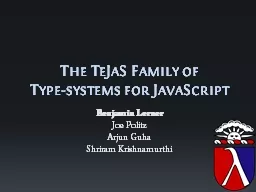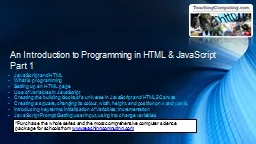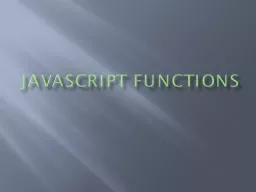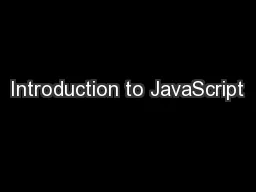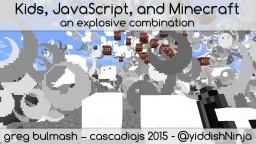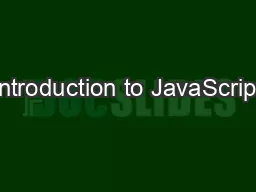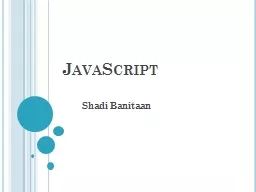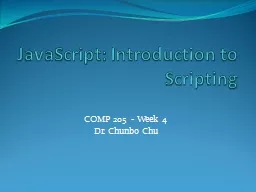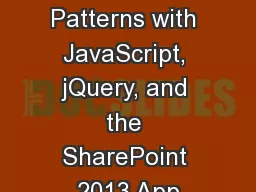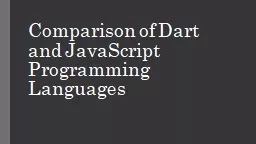PPT-The TeJaS Family of Type-systems for JavaScript
Author : sialoquentburberry | Published Date : 2020-07-03
Benjamin Lerner Joe Politz Arjun Guha Shriram Krishnamurthi Engineering JavaScript Semantics λ JS Desugar Their answer SpiderMonkey V8 Rhino Our answer Small
Presentation Embed Code
Download Presentation
Download Presentation The PPT/PDF document "The TeJaS Family of Type-systems for ..." is the property of its rightful owner. Permission is granted to download and print the materials on this website for personal, non-commercial use only, and to display it on your personal computer provided you do not modify the materials and that you retain all copyright notices contained in the materials. By downloading content from our website, you accept the terms of this agreement.
The TeJaS Family of Type-systems for JavaScript: Transcript
Download Rules Of Document
"The TeJaS Family of Type-systems for JavaScript"The content belongs to its owner. You may download and print it for personal use, without modification, and keep all copyright notices. By downloading, you agree to these terms.
Related Documents

